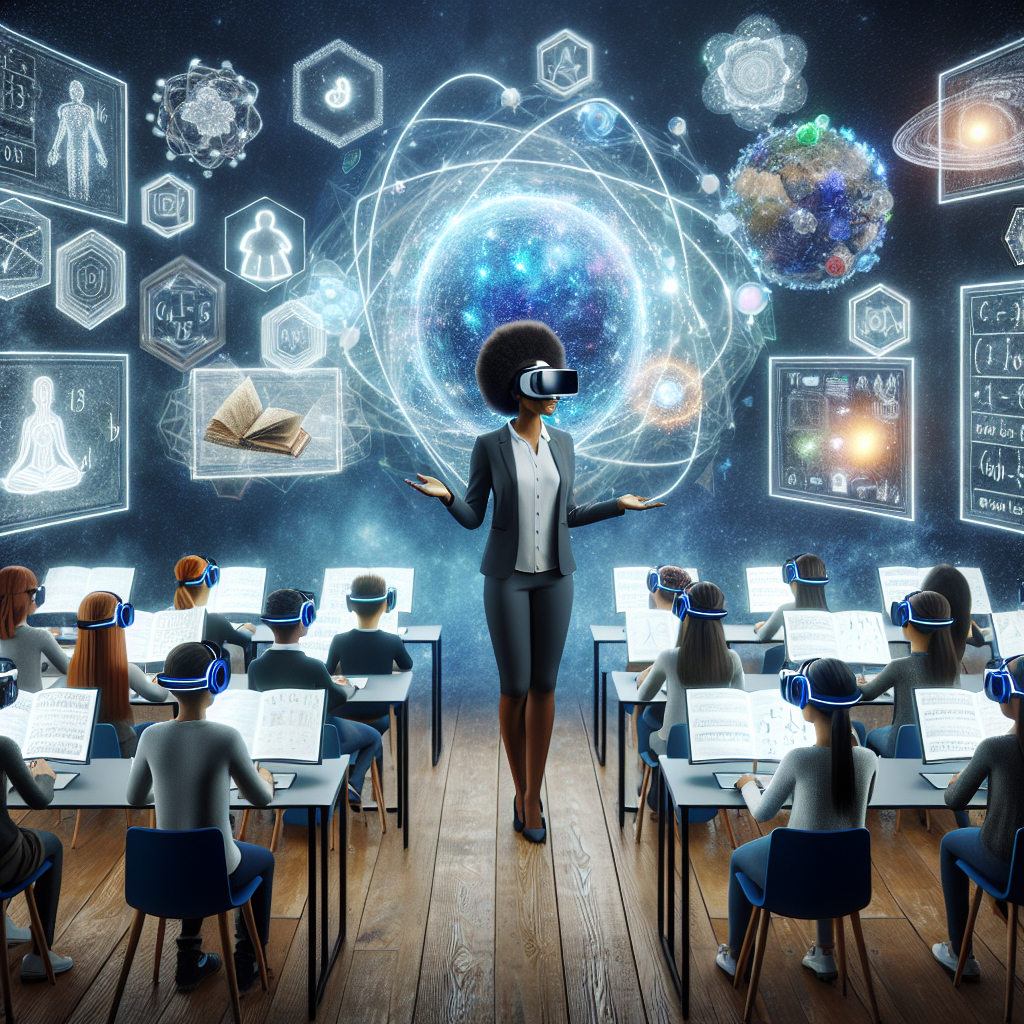Virtual reality (VR) technology has been making waves in numerous industries, and education is no exception. The emergence of VR classrooms has the potential to revolutionize the way students learn, offering a more immersive and interactive educational experience. In this article, we will explore the future of education through the transformational power of virtual reality classrooms.
What are Virtual Reality Classrooms?
Virtual reality classrooms are digital environments that simulate the experience of being in a physical classroom. Using VR headsets and controllers, students can interact with their surroundings, engage with educational content, and collaborate with classmates. Through the use of 3D models, simulations, and visualizations, students can explore complex concepts in a more interactive and engaging way.
The Benefits of Virtual Reality Classrooms
Virtual reality classrooms offer numerous benefits to both students and educators. Here are some of the key advantages of incorporating VR technology into education:
1. Immersive Learning Experiences: Virtual reality allows students to immerse themselves in educational content, providing a more engaging and interactive learning experience. By interacting with 3D models and simulations, students can gain a deeper understanding of complex concepts.
2. Personalized Learning: Virtual reality technology can be tailored to meet the individual needs of students. Educators can create custom learning experiences based on students’ unique learning styles and preferences, allowing for a more personalized and effective approach to education.
3. Access to Remote Learning: Virtual reality classrooms can bridge the gap between traditional in-person learning and remote learning. By using VR technology, students from around the world can access high-quality education without the need to physically attend a physical classroom.
4. Collaboration and Communication: Virtual reality classrooms promote collaboration and communication among students. Through virtual group projects and team-based activities, students can work together to solve problems, share ideas, and learn from each other.
5. Real-World Application: Virtual reality technology allows students to apply their knowledge to real-world scenarios. By simulating real-life situations, students can develop practical skills and gain hands-on experience in a safe and controlled environment.
The Future of Education: The Transformational Power of Virtual Reality Classrooms
As technology continues to evolve, virtual reality classrooms are poised to play an increasingly important role in the future of education. Here are some ways in which VR technology is transforming the educational landscape:
1. Increased Engagement and Motivation: Virtual reality classrooms have been shown to increase student engagement and motivation. By creating a more interactive and immersive learning environment, students are more likely to stay focused and actively participate in the educational process.
2. Enhanced Learning Outcomes: Studies have shown that virtual reality technology can lead to improved learning outcomes. By providing students with hands-on experiences, visualizations, and simulations, students are better able to grasp complex concepts and retain information.
3. Accessibility and Inclusivity: Virtual reality classrooms have the potential to make education more accessible and inclusive. By removing physical barriers, VR technology allows students with disabilities or limited mobility to participate in educational activities on an equal footing with their peers.
4. Cost-Effective and Sustainable: Virtual reality classrooms can be a cost-effective and sustainable solution for educational institutions. By reducing the need for physical classrooms and resources, VR technology can help schools save money and reduce their environmental impact.
5. Lifelong Learning Opportunities: Virtual reality technology can also provide opportunities for lifelong learning. By offering a wide range of educational resources and experiences, VR classrooms can support continuous skill development and professional growth throughout one’s life.
FAQs
Q: How can educators incorporate virtual reality technology into their classrooms?
A: Educators can incorporate virtual reality technology into their classrooms by investing in VR headsets, controllers, and software applications. They can also work with VR developers to create custom educational content that aligns with their curriculum and learning objectives.
Q: Are virtual reality classrooms suitable for all age groups?
A: Virtual reality classrooms can be suitable for all age groups, from elementary school students to adult learners. However, educators should consider the age and developmental stage of their students when designing VR educational experiences.
Q: What are the potential challenges of using virtual reality technology in education?
A: Some potential challenges of using virtual reality technology in education include the cost of VR hardware and software, technical issues and compatibility, and concerns about data privacy and security. Educators should carefully consider these factors when implementing VR technology in their classrooms.
Q: How can virtual reality classrooms support student learning and engagement?
A: Virtual reality classrooms can support student learning and engagement by providing immersive and interactive educational experiences. By incorporating 3D models, simulations, and visualizations, students can gain a deeper understanding of complex concepts and actively participate in the learning process.
In conclusion, virtual reality classrooms have the potential to transform the future of education by offering a more immersive, interactive, and engaging learning experience. As technology continues to evolve, VR technology will play an increasingly important role in shaping the educational landscape and providing students with new opportunities for learning and growth. By leveraging the transformational power of virtual reality classrooms, educators can create a more inclusive, accessible, and effective educational environment for all students.
